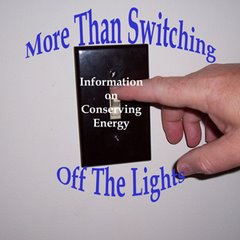1. Each year more than 380 billion plastic shopping bags are produced just for use in the United States.
2. Less than 35% of these bags are recycled. The rest will be thrown away, either to pollute the landscape on put in landfills.
3. Plastic bags are generally made from polyethylene and will take over 1,000 years to biodegrade in landfills. During this time they will emit harmful gases.
4. It’s easy to reduce the use of plastic bag, take a cloth bag or one made from plant-based materials to use each time you go to the store.
5. Chemicals commonly used by the plastic industry [propylene, phenol, ethylene, polystyrene, and benzene] are ranked as the chemicals that generate the most hazardous waste.
6. Countries that have banned or taken action to discourage the use of plastic bags include Australia, Bangladesh, Ireland, Italy, South Africa and Taiwan. Mumbai (formerly Bombay), India, also has banned the bags.
Showing posts with label Saving. Show all posts
Showing posts with label Saving. Show all posts
Saving Energy is Not Always Saving Money
If you are looking for instant savings to be generated by your efforts to save energy, you will probably be disappointed. The costs of some energy savings measures may take years to be recovered.
Big-ticket items such as replacing windows and adding insulation to attics and walls could have an initial cost of thousand of dollars. While they do save energy, it could take 15-20 years or longer for the savings to be seen. These costs are rarely recouped when selling your home. These are things to do if you want to help the environment and not put money back in your pocket.
One possible rule to follow when determining if the cost of an improvement is worth the investment is to figure if the return of the investment is accomplished in 50% of the useable life. Once again the useful life needs to be considered by using common sense. For some upgrades 30 years of useful life isn’t uncommon with 50% of that being 15 years. However if you only plan on using it for 5 years, is it practical?
There are some small purchases that rate of recovering the costs are a lot less. Changing to Compact Fluorescence Light Bulbs and adding a programmable thermostat will usually pay for them selves in less than a year.
There are a couple of suggestions that I’ve heard on saving energy/gas that does work. But they may not be practical. This is car-pooling and telecommuting.
Car-pooling is a good idea, but it’s also one where you have to consider circumstances into it. If there are a group of workers who all have the same schedule, with little to no possibility of schedule changes this work great. But if one of the riders could be required to work overtime or other schedule changes it may not be practical at all.
Telecommuting is a great idea. Not only does it save in energy it can also be good for employee moral. Many people would love to have the chance to roll out of bed and work in their PJs.
A number of items need to be figured to see if it’s worthwhile. One is obviously the employer needs to be fully into it. And not in a manner that they send someone to your house to see if you are working. The energy used for that would negate the savings.
Common sense is valuable and in saving energy it’s a good combination.
© 2007 Steven G. Atkinson – All Rights Reserved
Big-ticket items such as replacing windows and adding insulation to attics and walls could have an initial cost of thousand of dollars. While they do save energy, it could take 15-20 years or longer for the savings to be seen. These costs are rarely recouped when selling your home. These are things to do if you want to help the environment and not put money back in your pocket.
One possible rule to follow when determining if the cost of an improvement is worth the investment is to figure if the return of the investment is accomplished in 50% of the useable life. Once again the useful life needs to be considered by using common sense. For some upgrades 30 years of useful life isn’t uncommon with 50% of that being 15 years. However if you only plan on using it for 5 years, is it practical?
There are some small purchases that rate of recovering the costs are a lot less. Changing to Compact Fluorescence Light Bulbs and adding a programmable thermostat will usually pay for them selves in less than a year.
There are a couple of suggestions that I’ve heard on saving energy/gas that does work. But they may not be practical. This is car-pooling and telecommuting.
Car-pooling is a good idea, but it’s also one where you have to consider circumstances into it. If there are a group of workers who all have the same schedule, with little to no possibility of schedule changes this work great. But if one of the riders could be required to work overtime or other schedule changes it may not be practical at all.
Telecommuting is a great idea. Not only does it save in energy it can also be good for employee moral. Many people would love to have the chance to roll out of bed and work in their PJs.
A number of items need to be figured to see if it’s worthwhile. One is obviously the employer needs to be fully into it. And not in a manner that they send someone to your house to see if you are working. The energy used for that would negate the savings.
Common sense is valuable and in saving energy it’s a good combination.
© 2007 Steven G. Atkinson – All Rights Reserved
Subscribe to:
Posts (Atom)
